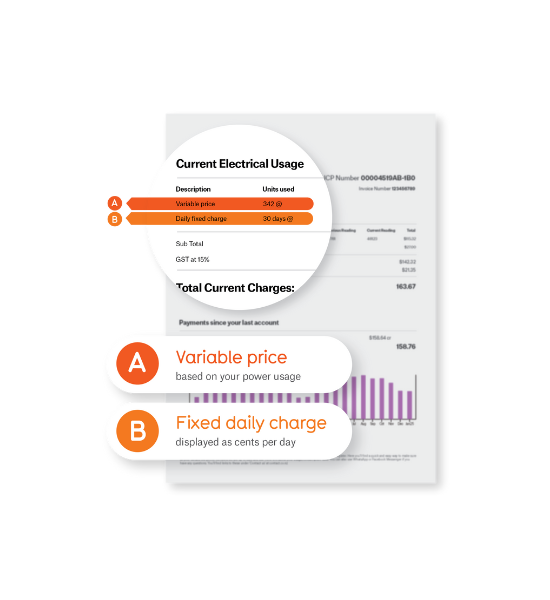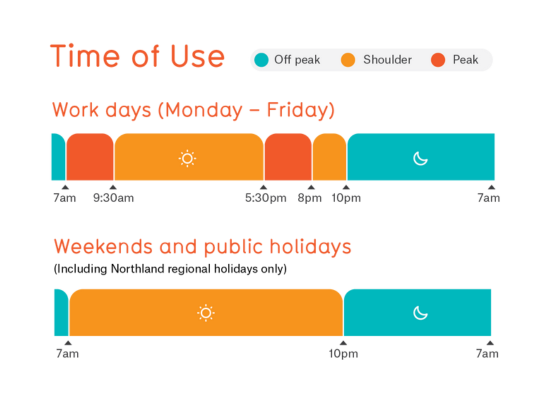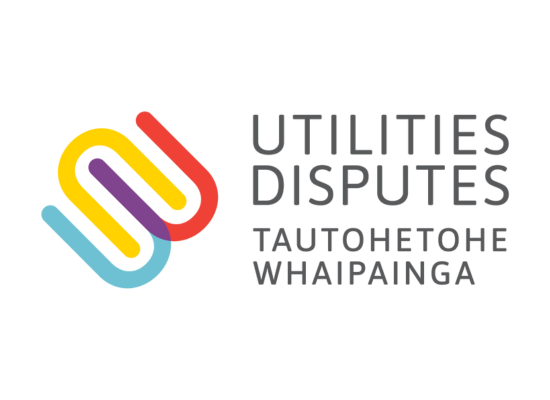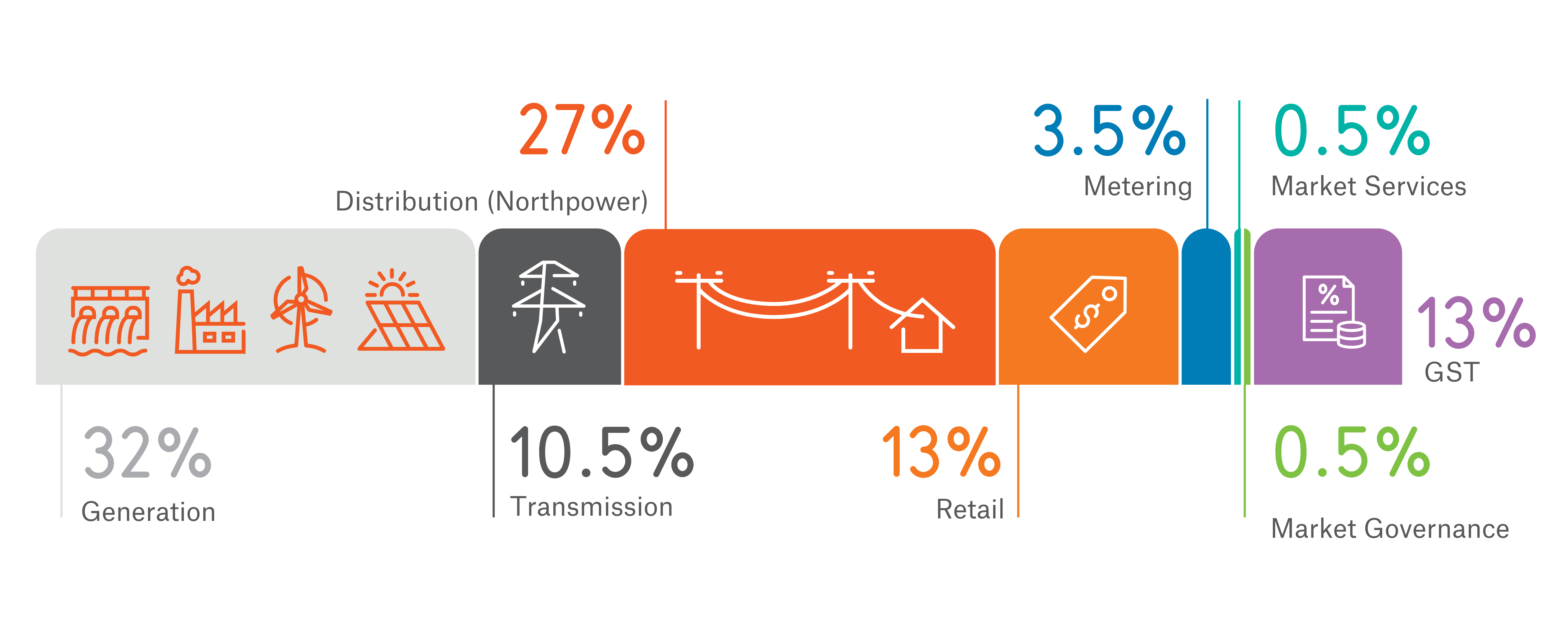
Understanding your power bill

Understanding your power bill
Your power bill comes from your electricity retailer and includes a range of costs bundled into one bill. These typically consist of:
- The daily fixed charge (displayed as cents per day) covers meter rental, meter reading, and electricity delivery charges. Retailers usually combine these costs into a single fixed fee. This includes Northpower’s charge for power distribution.
- A variable price (based on your power usage) shows your electricity usage, which is measured in kilowatt-hours (kWh), with the rate shown as cents per kilowatt hour (c/kWh).
- GST is applied to the total amount.

Time of Use pricing
Time of Use pricing means electricity costs vary depending on the time of day. Think of the electricity network like a road – when demand is high, it gets congested.
By shifting some of your electricity use to off-peak times – like running your dishwasher or dryer later at night or charging your EV overnight – you help ease pressure on the network. This reduces the need for costly upgrades and helps keep electricity prices lower for everyone.
Northpower applies Time of Use pricing when charging electricity retailers. However, it’s up to your retailer to decide whether they pass these pricing structures on to you.

Utilities Disputes information
Download the Utilities Disputes document, helping to explain the different parts that make up your electricity bill.
Get support


Advice hub


